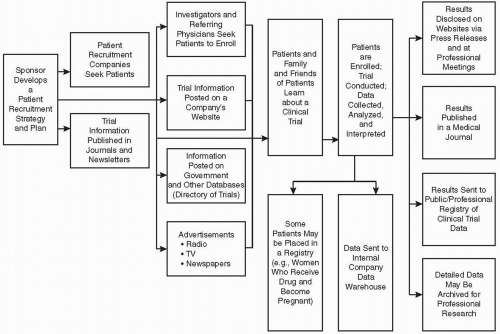1. |
Unique trial number: The unique trial number will be established by the primary registering entity (the registry). |
2. |
Trial registration date: The date of registration will be established by the primary registering entity. |
3. |
Secondary IDs: May be assigned by sponsors or other interested parties (there may be none) |
4. |
Funding source(s): Name of the organization(s) that provided funding for the study |
5. |
Primary sponsor: The main entity responsible for performing the research |
6. |
Secondary sponsor(s): The secondary entities, if any, responsible for performing the research |
7. |
Responsible contact person: Public contact person for the trial, for patients interested in participating |
8. |
Research contact person: Person to contact for scientific inquiries about the trial |
9. |
Title of the study: Brief title chosen by the research group (can be omitted if the researchers wish) |
10. |
Official scientific title of the study: This title must include the name of the intervention, condition being studied, and outcome. |
11. |
Research ethics review: Has the study at the time of registration received appropriate Ethics Committee approval (yes/no)? |
12. |
Condition: The medical condition being studied (e.g., asthma, myocardial infarction, depression) |
13. |
Intervention(s): A description of the study and comparison/control intervention(s). (For a drug or other product registered for public sale anywhere in the world, this is the generic name; for an unregistered drug, the generic name or company serial number is acceptable). The duration of the intervention(s) must be specified. |
14. |
Key inclusion and exclusion criteria: Key patient characteristics that determine eligibility for participation in the study |
15. |
Study type: Database should provide drop-down lists for selection. This would include choices for randomized versus nonrandomized, type of masking (e.g., double-blind, single-blind), types of controls (e.g., placebo, active), and group assignment (e.g., parallel, crossover, factorial). |
16. |
Anticipated trial start date: Estimated enrollment date of the first participant |
17. |
Target sample size: The total number of subjects the investigators plan to enroll before closing the trial to new participants |
18. |
Recruitment status: Is this information available (yes/no)? (If yes, link to information.) |
19. |
Primary outcome: The primary outcome that the study was designed to evaluate. Description should include the time at which the outcome is measured (e.g., blood pressure at 12 months). |
20. |
Key secondary outcomes: The secondary outcomes specified in the protocol. Description should include time of measurement (e.g., creatinine clearance at six months). |
aReprinted with permission of the International Committee of Medical Journal Editors (ICMJE). |




